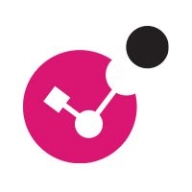

Trend Micro TippingPoint and Check Point CloudGuard Network Security compete in the threat protection system category. Check Point appears to have an edge due to its advanced cloud integration and flexibility, offering significant scalability and comprehensive threat prevention.
Features: Trend Micro TippingPoint excels with intrusion prevention, digital vaccines, and profile deployment. Its intuitive ACL menu simplifies rule management, and it supports an extensive range of pre-populated filters. Check Point CloudGuard offers features such as advanced threat prevention, identity awareness, and seamless public cloud integrations. It provides protection against zero-day threats and automatic rule adjustments, crucial in dynamic environments.
Room for Improvement: Check Point CloudGuard needs enhancements in documentation and user-friendliness. Users find the initial setup complex and the interface challenging. Trend Micro TippingPoint requires improvements in its Java-based interface and better integration with other systems. Cost reductions can make TippingPoint more appealing to mid-sized data centers, while Check Point should improve support and compatibility with cloud services like Microsoft CASB.
Ease of Deployment and Customer Service: Check Point CloudGuard supports deployment in on-premises, private, and public cloud environments, enhancing flexibility for hybrid cloud setups. However, its technical support could improve response times and availability. On the other hand, Trend Micro TippingPoint focuses on on-premises deployment and emphasizes strong customer relations, providing high-quality support though its cloud integration is less comprehensive compared to Check Point's.
Pricing and ROI: Check Point CloudGuard, though high in cost, delivers robust features and significant ROI through automation and scalability, offering multiple licensing models for different needs. Trend Micro TippingPoint is also expensive but includes necessary support and subscriptions in its pricing. Both products simplify management and enhance security, but Check Point's varied pricing models offer more flexibility for organizations.
The value lies in maintaining operational integrity with zero downtime or incidents, facilitating secure, ongoing business operations.
Implementing CloudGuard has resulted in an excellent return on investment over one hundred percent ROI.
The unified policy is comprehensive and helps me to create firewall policies that are shared across all our facilities and plants.
They usually respond quite fast, and they are very knowledgeable about what they do.
We had an endless loop of emails trying to fix this, and the suggestion was to reinstall the gateway and do it from scratch, which was not an option at that point because it would leave that specific location without access.
Available twenty-four by seven.
I can deploy it everywhere I need it.
We have transitioned from 1,000 to 500 users without any issue.
We perform minor and major upgrades, and it works seamlessly.
I have not observed any downtime.
For instance, when we are working on a release and do an upgrade, we start experiencing unexpected issues.
The solution is stable.
Scalability could be improved as well; needing to purchase a new license each time I want to add a new interface is not ideal.
Better documentation would be welcome.
The user interface could be more intuitive, and the initial setup and configuration can be complex, requiring a technical team.
The pricing and licensing are expensive, costing between seven thousand to eight thousand dollars.
Check Point is expensive, however, with the features and capabilities, I can justify the cost.
It is the highest in the market.
One of the most valuable features is the automated threat prevention, which helps us detect and block potential cyberattacks in real-time, minimizing data breaches.
Centralized management is the feature I like best, resulting in reduced workload and more continuous policy.
Network Security provides us with unified security management across hybrid and cloud as well as on-prem.
The system responds to potential threats in real time, which is very important, and the Trend Micro TippingPoint Threat Protection System performs excellently.
| Product | Market Share (%) |
|---|---|
| Check Point CloudGuard Network Security | 2.1% |
| Trend Micro TippingPoint Threat Protection System | 0.7% |
| Other | 97.2% |


| Company Size | Count |
|---|---|
| Small Business | 59 |
| Midsize Enterprise | 38 |
| Large Enterprise | 75 |
| Company Size | Count |
|---|---|
| Small Business | 11 |
| Midsize Enterprise | 6 |
| Large Enterprise | 4 |
Check Point CloudGuard Network Security offers centralized management, robust threat prevention, and seamless integration with major public clouds, ensuring consistent security for cloud and on-premises environments. It combines ease of use with flexibility across diverse IT infrastructure.
Check Point CloudGuard Network Security provides comprehensive protection for IT infrastructures in AWS, Azure, and hybrid environments. It ensures firewall security, managing traffic and securing cloud infrastructures while maintaining network protection and compliance enforcement. Organizations benefit from its centralized security governance, enhanced visibility, and threat prevention for both perimeter and internal security. It offers seamless integration with leading cloud platforms, allowing for efficient deployment and scalability, aligning with modern cloud requirements.
What are the key features of Check Point CloudGuard Network Security?In industries such as finance, healthcare, and tech, Check Point CloudGuard Network Security is vital for protecting sensitive data, managing compliance, and safeguarding daily operations. Its robust integration capabilities support diverse infrastructure setups, assisting companies in maintaining high-security standards efficiently.
Keep ahead of the latest threats and protect your critical data with ongoing threat prevention and analysis.
We monitor all Cloud and Data Center Security reviews to prevent fraudulent reviews and keep review quality high. We do not post reviews by company employees or direct competitors. We validate each review for authenticity via cross-reference with LinkedIn, and personal follow-up with the reviewer when necessary.